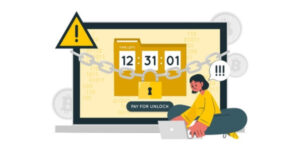27 Jul
Just imagine waking up one morning to find your house broken into and some valuable items missing. Now think about such things happening in your company’s data. They can be equally scary and damaging just like the burglaries. However, having a good response plan will make a difference. Let us go through how to create a data breach response plan that is simple.
What is a Data Breach?
A data breach occurs when sensitive information is accessed or stolen without permission. This can be personal information like names, addresses, credit card numbers or business trade secrets. Hacking, lost devices including human error may cause some of these breaches.
Why Have a Response Plan?
The essence of having this plan is that it helps take action fast and effectively following a breach. It mitigates damage, safeguards victims and facilitates quick recovery by the company involved. You could liken it to practicing fire drills where everyone knows what they are supposed to do in order to stay safe.

Creating a Data Breach Response Plan – Steps
Preparation
Begin by identifying the kind of information that requires protection; this includes customer details, financial records and internal documents as well as making an inventory of all places where such data is kept both offline and online.
Next, put together a team responsible for handling violations of privacy. The team should include members from various departments in your organisation such as IT, legal and communications departments. Ensure that everybody is aware of their role.

Detection
Detecting a breach fast enough is very important. Employ them to identify irregular activities like numerous unsuccessful attempts to log in or significant data transfers. Educate the employees on how to notice when a breach has occurred through strange emails or low computer speed.

Assessment
Evaluate the situation once you have identified a breach. Find out which information was accessed and establish the number of people who were affected by this eventuality; this will help you gauge the extent of destruction and plan on what next.

Containment
Constrain the damage of breaches within your systems so as not to affect other important files that could lead to increase in losses if damaged too. This may involve isolating the infected systems from internet access, modifying passwords or shutting down segments of your network temporarily.

Eradication
Get rid of what caused the violation in question such as deleting malware, fixing software vulnerabilities or correcting human errors mistake make sure that such form of breach does not recur again.

Notification
Notify those affected by the hack. These include customers, employees maybe regulators also be candid about it stating clearly what transpired and provide details about compromised information and steps being taken to resolve it.

RECOVERY
Work at reinstating normal operations. This can mean restoring data from backups, updating security measures, and continuously monitoring for further problems. Make sure that you document everything done during the recovery process.
REVIEW
Review what happened after dealing with the breach: what was good and what was bad? Based on these lessons improve your response plan to be more ready for future incidents.
Tips for a Strong Response Plan
• Regular Training: Train employees regularly on data security and breach response. The faster they understand this, the sooner you will react to a breach.
• Clear Communication: Ensure that communication is clear and straightforward during a breach. Avoid using technical terms when communicating to affected parties.
• Legal Compliance: Be aware of legal requirements pertaining to notification of data breaches in your area. Various jurisdictions have different regulations of how and when people should be notified about a breach.
• Continuous Improvement: Regularly test and update your response plan. Since technology changes so do threats; hence, plans have to be adapted accordingly.

Conclusion
Though data breaches can be stressful and ruinous, having an adequately prepared response plan can significantly minimise their effects. Thus, by following company’s steps of preparation, detection, assessment, containment, eradication, notification, recovery and review any company can respond effectively to any breach.
Remember, the key is to act quickly and transparently. Protecting your data is not just about preventing breaches, but also about being ready to handle them efficiently when they occur. Keep training your team, updating your plan, and learning from each incident. This way, you can safeguard your company’s information and maintain trust with your customers.
